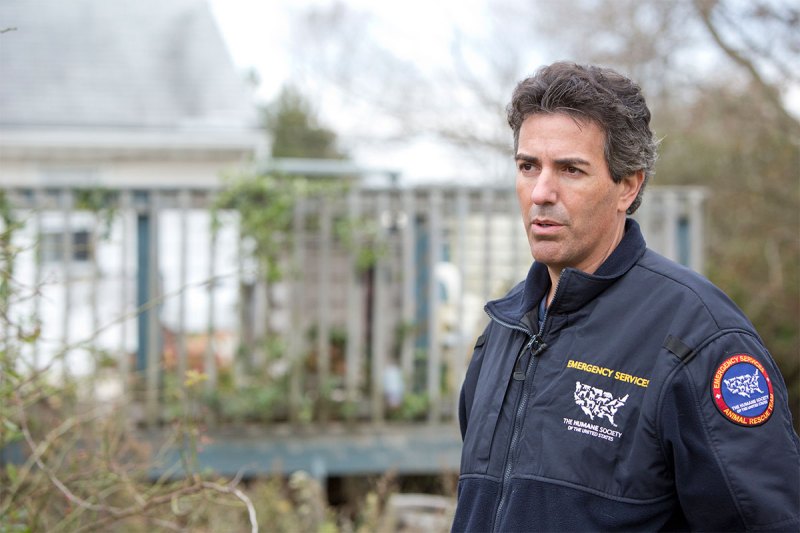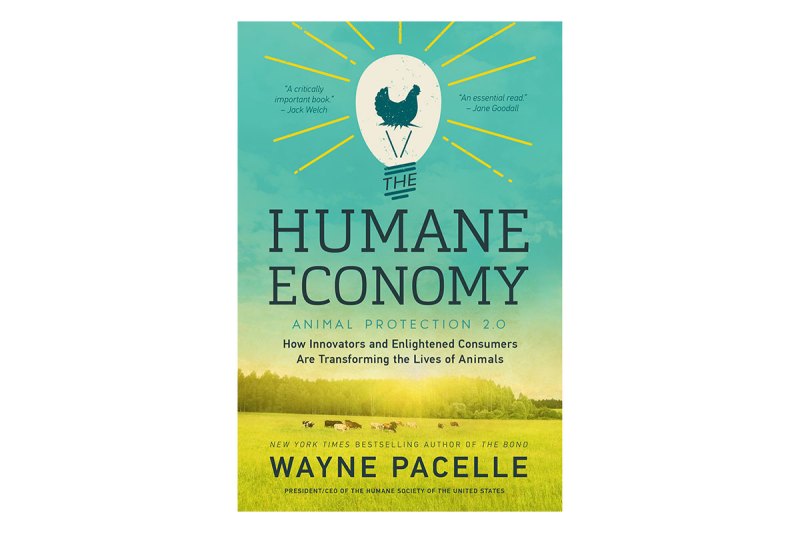
He has been a major part of enacting 138 federal animal protection laws, encompassing everything from ending puppy mills to incorporating animals into disaster plans; he’s helped enact over 1200 state laws and he’s testified in front of Congress about animal issues. Not to mention, HSUS was ranked the #1 high-impact animal group by Guidestar’s Philantropedia, just to name a very few of his achievements.

To your knowledge, was there ever a moment in human history when we had something akin to the humane economy or is this a new era?
We are at an odd moment in human history. There’s never been so much concern for animals, and yet in our industrial era, and with so many people on the planet, there’s never been so much exploitation. Something’s got to give, and we are finally seeing things break in the direction of animal protection. Major food retailers, such as McDonald’s and Walmart, are starting to develop animal welfare standards and changing practices in their supply chains; Ringling Brothers and SeaWorld are transitioning from the use of wild animal acts involving elephants and orcas; hundreds of companies are moving away from animal testing. The notion of the humane economy is a response to the crisis of the inhumane economy; we’ve been doing a lot of terrible things to animals for a long time. But it doesn’t have to be this way. We know too much about animals and their consciousness and intelligence to be in denial any longer, and we are creative and resourceful enough to figure out a way forward that does not require us to use and torment animals on a mass scale.
Can you identify a watershed moment in the development of the humane economy?
The single biggest political event in recent years was the passage of Proposition 2 by California voters to stop the extreme confinement of veal calves, breeding pigs, and laying hens on factory farms. That ballot measure, which addressed cruelties to a class of animals that some opinion leaders thought could not possibly stir the conscience of the masses, passed by an overwhelming margin in the nation’s biggest state. It upended political perceptions of animal protection and triggered a wave of additional lawmaking and corporate actions in California that then reverberated across the nation. It sets the stage for additional political gains and it opened up the discussion with hundreds of major corporations that suddenly recognized that they could not conduct business as usual.
In the book you talk about exciting advancements in lab-made meats and leathers, requiring no animal harm or death. How far off are we from animal-free meat and do you believe it faces an uphill battle getting to market?
The tools and technology exist now. It will take a while to scale it up, but that’s just a matter of time and properly perfecting the techniques and making them cost-efficient. That said, we don’t need to wait for that day to wean ourselves from factory farmed animal products. Businesses are affordably producing plant-based proteins that mimic the qualities of meat. These products can give us what we love about meat, but without hormones or antibiotics; overuse of grains, water, and topsoil; or animal cruelty.
The Iditarod is an important cultural event in Alaska with historic roots. How do you approach the issue of animal welfare in the context of a cultural event like the Iditarod where animals have an innate disposition to work, there is an attempt to protect and care for the dogs, but still deaths occur?
Culture should never be a defense for cruelty, yet looking at animal use through a cultural lens is both inevitable and important. Defenders of certain practices like bullfighting or cockfighting argue that these are culturally significant activities, but the exploitation and suffering inherent to some of these practices is so acute that there’s no legitimate defense. These practices must end, just as we’d never accept child slavery or the mutilation of women because it was practiced for a long time in a locale or a nation. The Iditarod, in my mind, is different than these extreme forms of cruelty because it need not require death or even injury of the animals. The dogs are competing, but it can be regulated in a way to minimize some considerable risks for the animals. It’s tough, but it can happen.
In your book you talk about religion’s role in the fight for animal protection: the current pontiff, Pope Francis, has written about a Biblical precedence for respecting animals, Hinduism provides shelters for cows as well as banning their slaughter in certain places, Buddhists, including the Dalai Lama, have called for the end of animal abuse. You write that the Indonesian Council of Ulama even issued a fatwa on the “Protection of Endangered Species to Maintain the Balance of the Ecosystems,” the rationale being that man’s laws can be circumvented, but a god’s law carries more weight. How much of an impact does religion have on fostering the humane economy and what do you feel the role of religion will be in furthering the concept?
There are many different forces pushing ahead the elements of the humane economy – from art and film and literature to science to entrepreneurial activity to strategic activism and so much more. So there’s no single key to success. But given that so many people align themselves with religious ideas, reminding people of faith of their own traditions that call for mercy and compassion for animals has the potential to be an immense force for good. Religious principles and tenets should never be abstractions, but instead give us practical guidance in conducting our lives. It’s so important that religious doctrine points us in the direction of being good to animals. As a matter of fact, religious influences were decisive in the early formation of the animal protection movement.
Information about factory farming, slaughterhouses, puppy mills, animal testing, etc. can be incredibly disturbing. How do you educate people without upsetting them so much they might turn away from the issue?
It’s very difficult to show people cruel practices and not to have them avert their gaze or even entirely shut down. As we roll out our investigations, we try to expose people to what we consider a digestible level of violence. We want to show them the reality of what happens to animals, but not overexpose them. An emotional response can stir indignation and action, but it can also cause paralysis, and it’s the indignation and action that we want.
In chapter six, you discuss the sad state of wolves in the US, and how many oppose their reintroduction despite evidence of immense benefits. You write that the wolves’ natural hunting behavior would help regulate deer populations, mitigating the 1.2 million annual car collisions with deer, causing deaths and billions in damage and insurance payouts. Who are some of the unlikely allies, like insurance companies, advocates of the human economy should look for?
When we are good to animals, we typically see good outcomes through the whole of society. Insurance companies should be friends of wolves, because wolves can limit deer populations and reduce deer-auto collisions, meaning that there are fewer claims by insurance holders. Law enforcement is aligned with us because when they arrest perpetrators of animal cruelty, they are identifying and often incarcerating people who represent a larger threat to our communities and the safety of them. When we crack down on factory farms, we help homeowners too, because their property values don’t drop because of the smell wafting from these concentrated animal feeding operations or because massive manure loads are not polluting their local water supply.
What is the role of animals if and when a truly humane economy achieves completely animal-free meats, dairy products, and animal-free medical testing? What does the life of a cow, chicken, pig, or any non-pet animal, look like when they’re no longer necessary to humans?
This is going to be a long, evolutionary process. The change we are seeking can only play out over decades, so there’s no risk that domesticated farm animals are going to vanish. In the end, I’m not sure people will give up all meat and other animal products, even though they can live healthfully without them. The key outcome is to reduce consumption. With small numbers of animals, and more farmers who actually tend to the animals and care for them, we’ll see a much more humane and sustainable agricultural system.
The Humane Economy has an optimistic tone and ends with a variety of ways people can help and contribute to making the humane economy possible. What are you most hopeful about and what are the areas you feel need the most attention?
Perhaps the greatest number of animals are at risk in the food production system, and that’s the one area where each of us has enormous control. We make life and death, humane and inhumane choices every day when we decide what food to put into our bodies. Because eating more plant-based foods is better for our health and for the planet, I do think this idea will be ascendant and more popular. Ultimately, I believe people will make rational decisions, even if they are obstinate or show poor judgment in the short run.
The logic and science behind animal protection is hard to combat. There’s just no good justification for such continuing tyrannical behavior toward animals. The opponents of animal protection are just deniers – they are the moral equivalent of the flat earth society.


